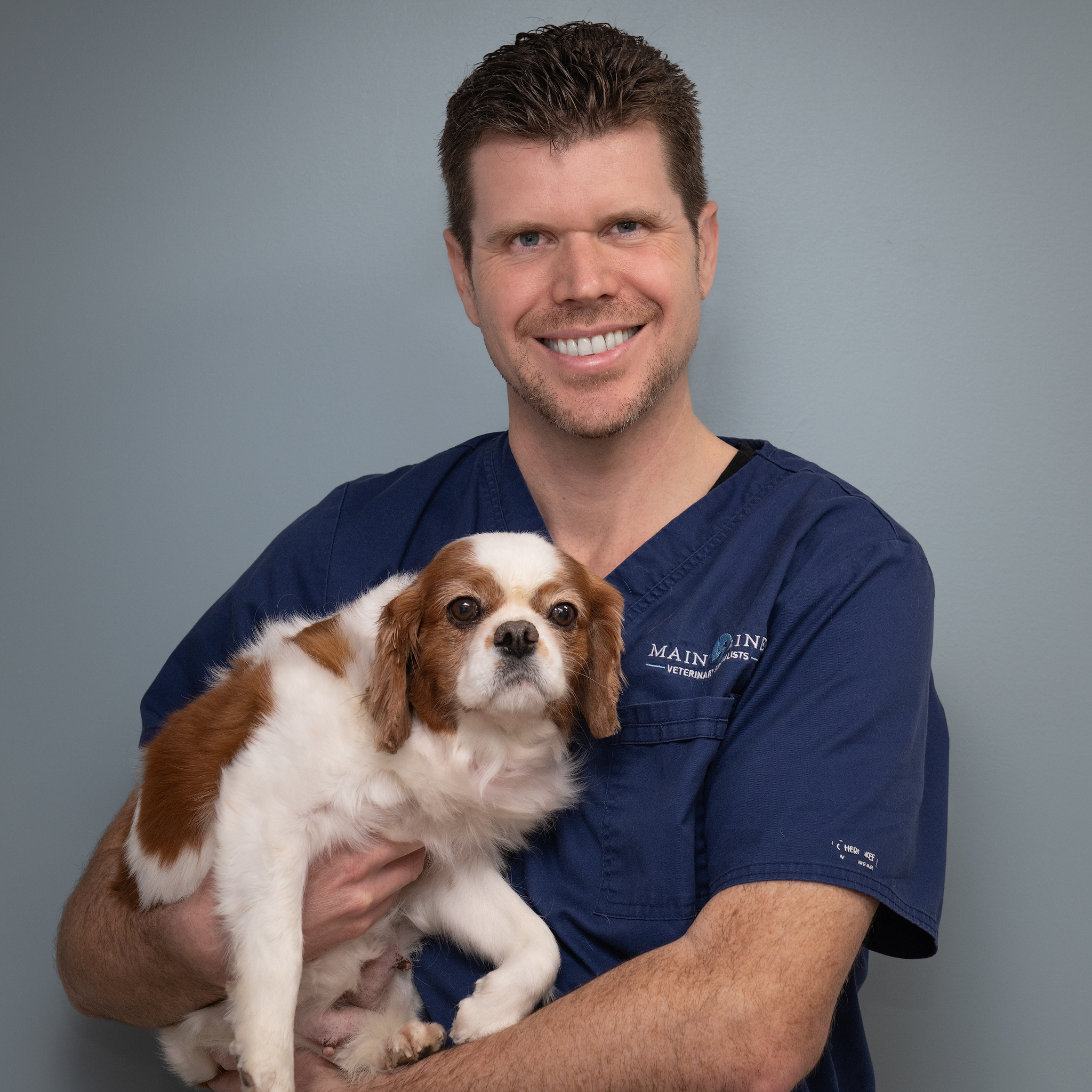The Function of Ultrasound and CT Scan in Modern Veterinary Practices: Insights From Experienced Professionals
In modern-day vet techniques, ultrasound and CT scans significantly boost diagnostic capabilities. These imaging methods provide crucial understandings right into animal wellness, assisting treatment choices. Experienced professionals recognize the distinct benefits of each method. Ultrasound uses real-time evaluations, while CT checks supply elaborate physiological details. Recognizing their applications and roles elevates essential inquiries regarding their influence on person end results and the future of veterinary diagnostics. What insights can be gotten from their integrated use?
Comprehending Ultrasound in Veterinary Medicine
Ultrasound is a crucial diagnostic tool in veterinary medication, providing a non-invasive method to envision interior frameworks. This imaging strategy utilizes high-frequency audio waves to create real-time photos of body organs and cells, enabling veterinarians to analyze conditions without surgical treatment. Usual applications consist of reviewing the heart, liver, kidneys, and reproductive body organs, in addition to keeping an eye on pregnancies.The treatment is relatively quick and can be performed in various settings, making it an available option for vets. Unlike radiography, ultrasound supplies detailed info regarding soft cells and blood flow, which is vital for precise diagnoses.Veterinary professionals rely upon ultrasound to discover problems such as lumps, cysts, and liquid buildup. Its ability to guide biopsies and various other procedures further enhances its energy in clinical technique. By supplying a risk-free and effective way to analyze inner composition, ultrasound has actually become a keystone of modern vet diagnostics.
The Benefits of CT Scans for Pet Diagnostics
CT checks deal considerable advantages in vet diagnostics by offering improved precision in recognizing inner problems (CT Scans For Dogs). As a non-invasive imaging strategy, they ensure the security and convenience of animals during evaluations. Furthermore, CT scans promote a complete assessment of internal structures, permitting more efficient therapy preparation
Improved Diagnostic Precision
Developments in imaging technology have substantially improved analysis precision in veterinary medicine, particularly via the usage of CT scans. These scans give in-depth cross-sectional pictures of an animal's inner frameworks, enabling veterinarians to determine irregularities with precision. The high resolution and three-dimensional capacities of CT imaging facilitate the detection of problems such as tumors, cracks, and internal bleeding that could be missed out on with conventional imaging methods. Additionally, CT scans can assist in pre-surgical planning by using a complete sight of physiological connections. This degree of detail not only enhances the accuracy of medical diagnoses however additionally aids in customizing reliable therapy strategies. The assimilation of CT modern technology into veterinary methods is changing the landscape of animal medical care, enhancing end results for clients.
Non-Invasive Imaging Strategy
The introduction of non-invasive imaging methods has reinvented animal diagnostics, with CT scans arising as a popular device in vet methods. These scans supply high-resolution, cross-sectional images of an animal's internal structures, allowing veterinarians to assess complex problems without the need for intrusive treatments. The advantages of CT scans include their ability to find tumors, cracks, and inner bleeding with remarkable accuracy. In addition, they facilitate the assessment of soft tissues and body organs, boosting diagnostic capacities. The speed of CT scanning allows quick decision-making, which is important in emergency circumstances. By reducing anxiety and discomfort for the pet, CT scans contribute to a much more humane strategy to diagnostics, inevitably enhancing therapy results and advancing vet care.
Comprehensive Internal Analysis
A complete interior assessment is crucial for exact medical diagnosis and reliable therapy in veterinary medication. CT checks deal substantial advantages hereof, offering in-depth cross-sectional photos of a pet's inner frameworks. This sophisticated imaging modality improves visualization of complicated anatomical areas, allowing vets to identify problems such as growths, cracks, and internal bleeding with better precision. On top of that, CT scans facilitate the evaluation of conditions that might be challenging to detect via traditional approaches. The speed and precision of CT imaging likewise add to timely interventions, boosting client results. As vet methods significantly include CT innovation, the benefits of considerable internal analyses come to be obvious, reinforcing the importance of this tool in contemporary vet diagnostics.
Contrasting Ultrasound and CT Imaging Techniques
While both ultrasound and CT imaging serve essential duties in vet diagnostics, each strategy uses distinctive advantages and limitations that can influence professional decision-making. Ultrasound is specifically valued for its real-time imaging capacities, allowing veterinarians to observe dynamic physical processes. This technique is non-invasive, portable, and does not involve ionizing radiation, making it a more secure option for both pets and medical professionals. Ultrasound might have restrictions in picturing specific anatomical structures or deep tissues.Conversely, CT imaging provides thorough cross-sectional sights of the body, enabling for exact localization of problems. It stands out in examining facility body organs and frameworks, specifically in the thorax and abdominal area. CT scans require sedation or anesthetic in many situations and involve direct exposure to ionizing radiation. Ultimately, the selection between ultrasound and CT depends upon the particular professional scenario, the location of rate of interest, and the seriousness of the diagnostic needs.
Case Studies: Successful Diagnoses Through Imaging
Study illustrate the substantial renovations in analysis precision attained via innovative imaging innovations like ultrasound and CT scans in vet practices. These innovations not just boost the detection of various problems yet likewise assist in effective and prompt therapy strategies. Evaluating particular situations can highlight the transformative impact of these imaging strategies on vet medicine.
Analysis Accuracy Improvements

Imaging Innovation Advancements
As vet imaging innovation remains to evolve, its effect on analysis abilities becomes increasingly evident. Recent case studies highlight the successful application of advanced ultrasound and CT check strategies in recognizing intricate conditions. A veterinary clinic utilized high-resolution CT scans to diagnose an uncommon type of lung cancer in a pet, which conventional imaging had missed. An ultrasound assessment revealed an abdominal mass in a feline, motivating prompt medical treatment and a positive result. These innovations not just improve analysis accuracy however additionally allow veterinarians to develop targeted therapy strategies. By leveraging cutting-edge imaging modern technologies, veterinary specialists are substantially boosting patient care, leading to extra reliable administration of different wellness conditions in animals.
The Function of Imaging in Emergency Situation Veterinary Care
Imaging plays an essential role in emergency vet care, providing veterinarians with essential information needed to make quick, enlightened choices. In immediate situations, methods like ultrasound and CT scans make it possible for professionals to swiftly evaluate a pet's internal frameworks, identifying critical problems such as internal blood loss, cracks, or organ problems. These imaging modalities permit real-time evaluations, facilitating prompt interventions that can be life-saving. For example, ultrasound is invaluable for reviewing soft tissue injuries and conditions like fluid accumulation, while CT scans deal detailed pictures of complicated anatomical structures, vital for diagnosing injury situations. The speed and accuracy of these imaging methods enhance the vet's capacity to devise effective treatment plans, making certain the most effective possible results for their people. The combination of innovative imaging technologies into emergency vet techniques is not only useful yet progressively necessary, as it enhances diagnostic abilities and enhances total pet treatment throughout critical minutes.

Training and Expertise in Vet Imaging
Although sophisticated imaging methods such as ultrasound and CT scans are essential for effective vet care, the successful execution of these modern technologies heavily depends on the training and competence of veterinary experts. Skillful use imaging devices calls for comprehensive knowledge of composition, pathology, and the principles underlying each modality. Vet professionals must go through customized training to accurately analyze imaging outcomes, which is important for identifying problems and intending treatment.Certifications and continuing education in vet imaging boost the skills of specialists, allowing them to stay updated with technological innovations. index Partnership in between radiologists and veterinarians usually causes improved analysis accuracy, as specialists can provide insights into complicated situations. In enhancement, functional experience in handling imaging devices cultivates confidence in its application. Eventually, the quality of vet imaging solutions is straight correlated to the degree of training and know-how had by the specialists making use of these essential diagnostic tools.
Future Patterns in Diagnostic Imaging for Animals
With the rapid improvements in innovation, veterinary analysis imaging is poised for substantial evolution in the coming years. Emerging fads show a shift in the direction of even more available and mobile imaging modalities, such as portable ultrasound gadgets, which could improve area diagnostics. Additionally, the combination of fabricated intelligence is anticipated to change picture evaluation, enabling quicker and more exact interpretations of results.Moreover, advancements in 3D imaging strategies and calculated tomography will give veterinarians with even more complete sights of animal makeup, causing enhanced therapy strategies. Online truth modern technology might additionally contribute in surgical preparation and education and learning, providing veterinarians an one-of-a-kind perspective on complex cases.As telemedicine remains to grow, remote consultations assisted in by diagnostic imaging will certainly come to be more common, allowing professionals to assist basic practitioners in real-time. In general, these trends are set to boost the performance and effectiveness of vet treatment, ultimately boosting animal end results.
Often Asked Inquiries
Just How Much Do Ultrasound and CT Checks Price in Vet Facilities?
The costs of ultrasound and CT scans in vet centers normally range from $300 to $1,500, Read Full Article depending upon aspects such as area, center kind, and particular procedures required for the pet's diagnosis and treatment.

Exist Any Threats Related To Ultrasound and CT Scans for Pets?
Ultrasound and CT scans usually position minimal dangers to family pets. Potential problems include sedation responses and exposure to anesthetics. Veterinarians thoroughly assess each case to minimize any dangers associated with these diagnostic treatments
For How Long Do Ultrasound and CT Procedures Commonly Take?
Ultrasound treatments generally take about thirty minutes to an hour, relying on the intricacy. CT scans, being even more detailed, typically need thirty minutes to 90 mins, consisting of prep work and healing time for the family pet.
Can All Veterinarians Perform Ultrasounds and CT Scans?
Not all veterinarians can execute ultrasounds and CT scans. Specialized training and certification are usually required to assure proficiency in these innovative imaging methods, which might limit their availability to veterinarians with extra certifications and sources.
What Sorts Of Animals Profit A Lot Of From These Imaging Techniques?
Certain pet species, particularly felines and pet dogs, benefit significantly from ultrasound and CT scans. These imaging strategies improve analysis precision for conditions like growths, interior injuries, and organ abnormalities, leading to enhanced therapy outcomes and individual treatment. The high resolution and three-dimensional abilities of CT imaging help with the discovery of problems such as growths, fractures, and internal blood loss that could be missed out on with conventional imaging methods. Situation research studies highlight the substantial enhancements in analysis accuracy accomplished with advanced imaging innovations like ultrasound and CT scans in veterinary methods. Improving diagnostic accuracy in veterinary techniques has been significantly assisted by innovations in imaging modern technologies such as ultrasound and CT scans. Sophisticated imaging techniques such as ultrasound and CT scans are vital for effective vet care, the successful implementation of these technologies heavily depends on the training and competence of veterinary professionals. Veterinary specialists should go through specific training to precisely analyze imaging results, which is important for detecting problems and preparing treatment.Certifications and continuing education and learning in vet imaging boost the review abilities of experts, enabling them to remain upgraded with technological innovations.
Comments on “How to Tell if Your Pet Needs an Ultrasound For Dogs}”